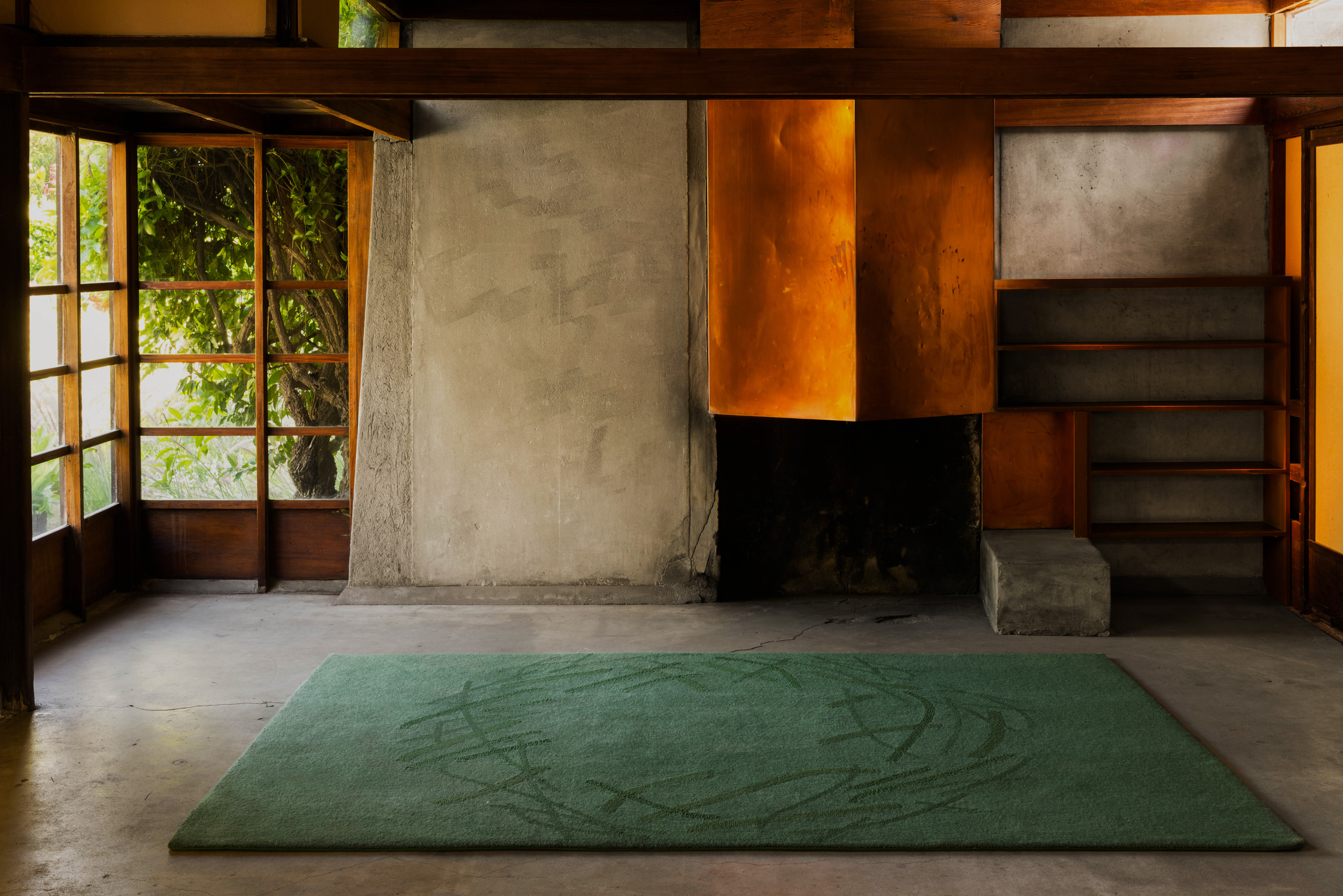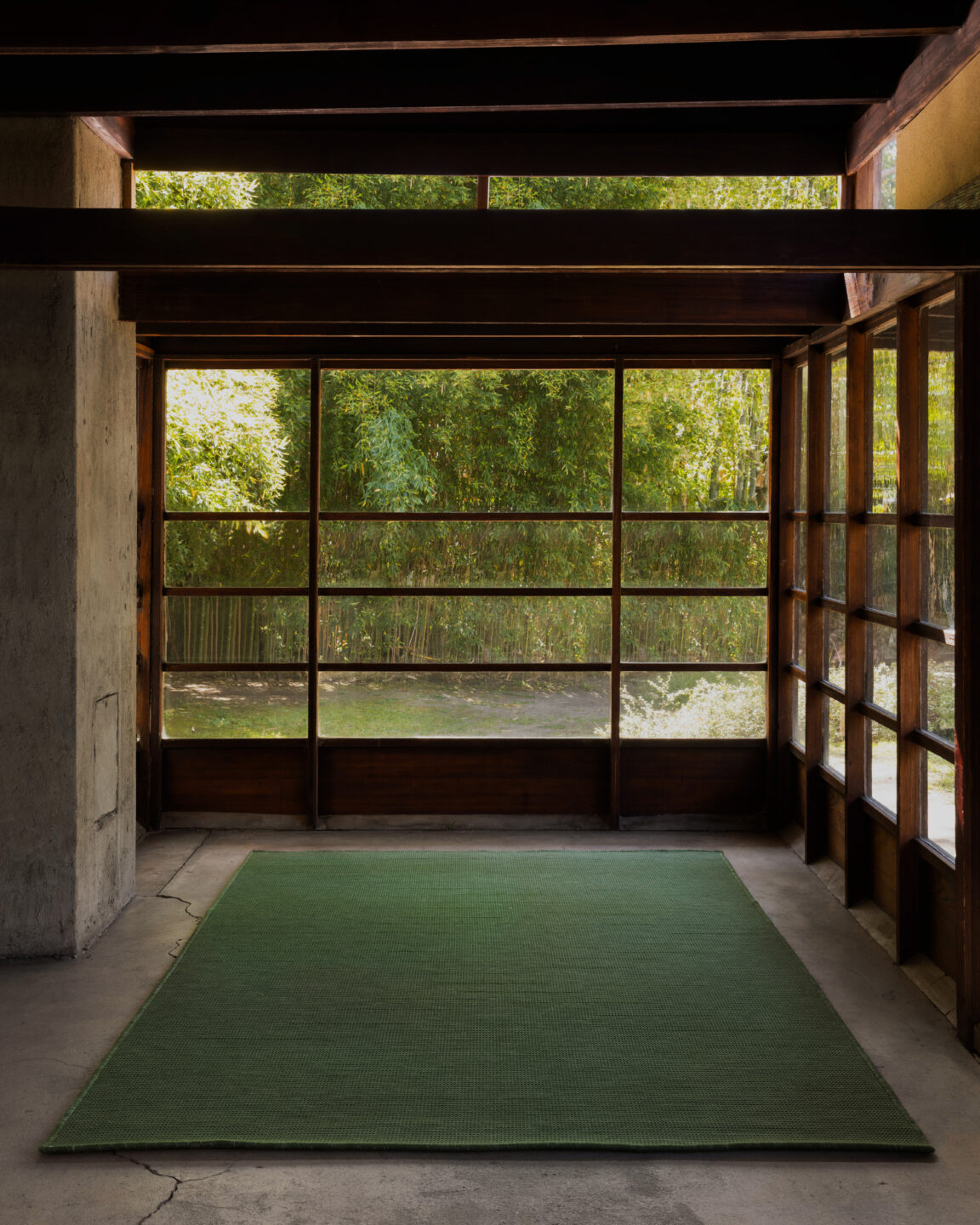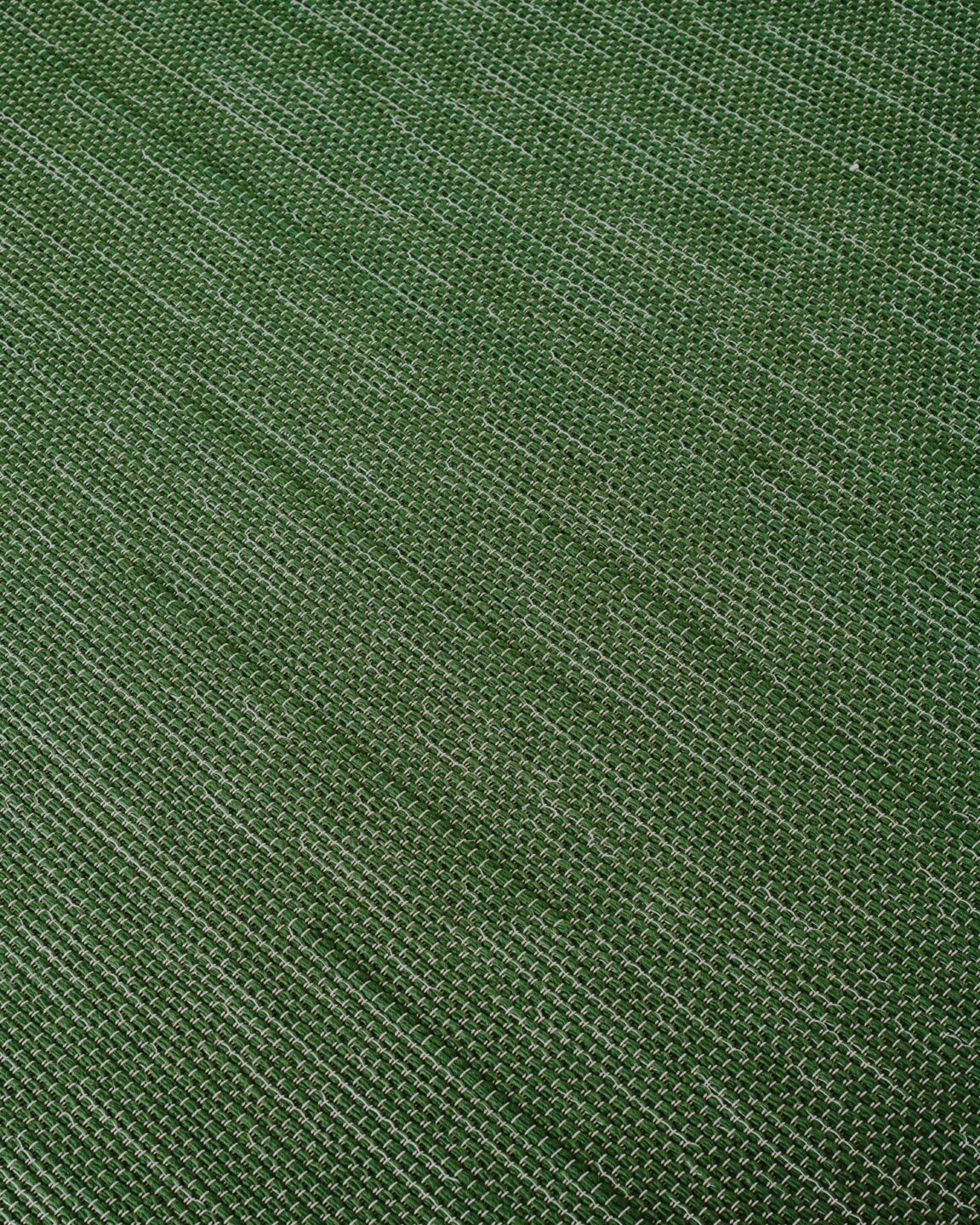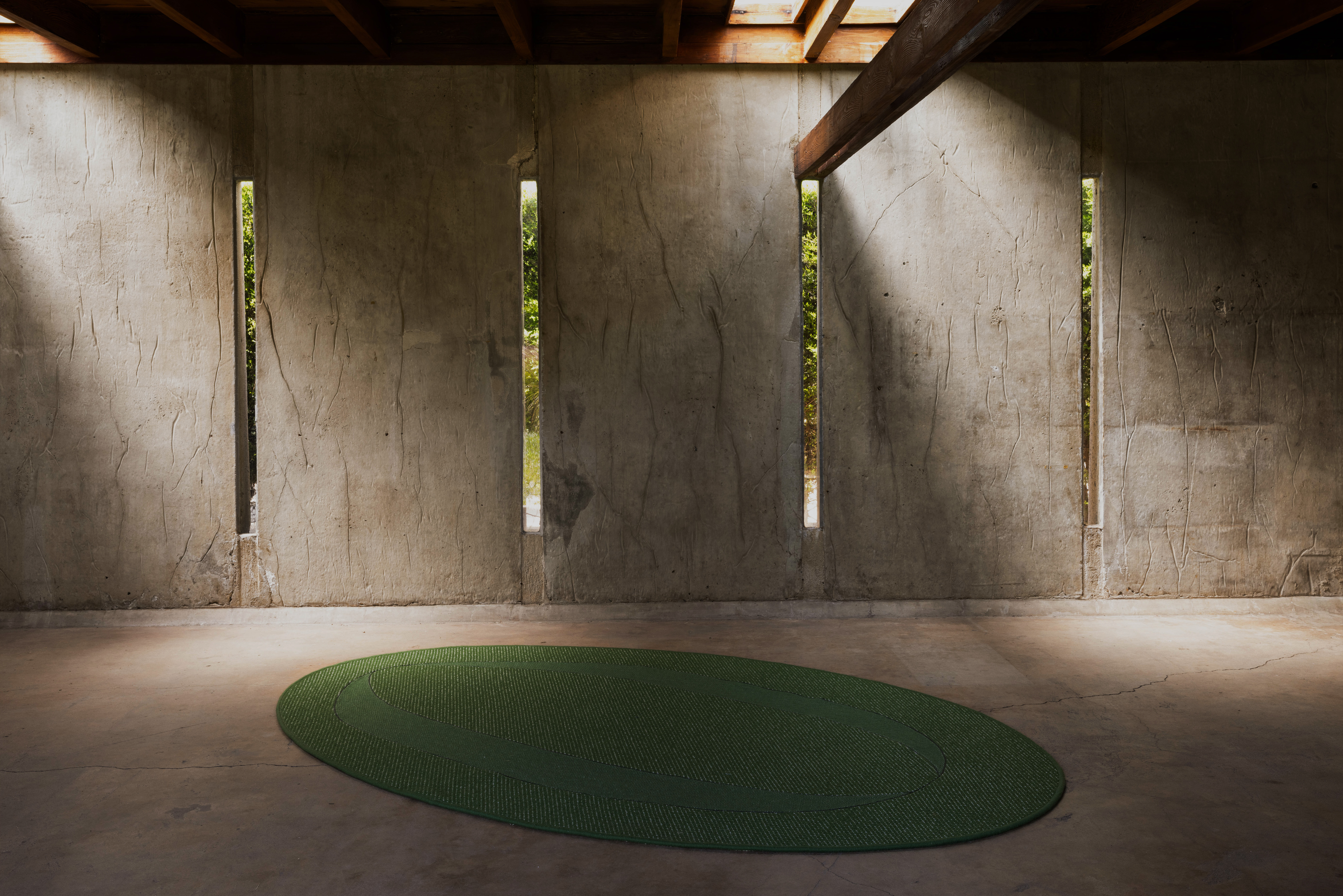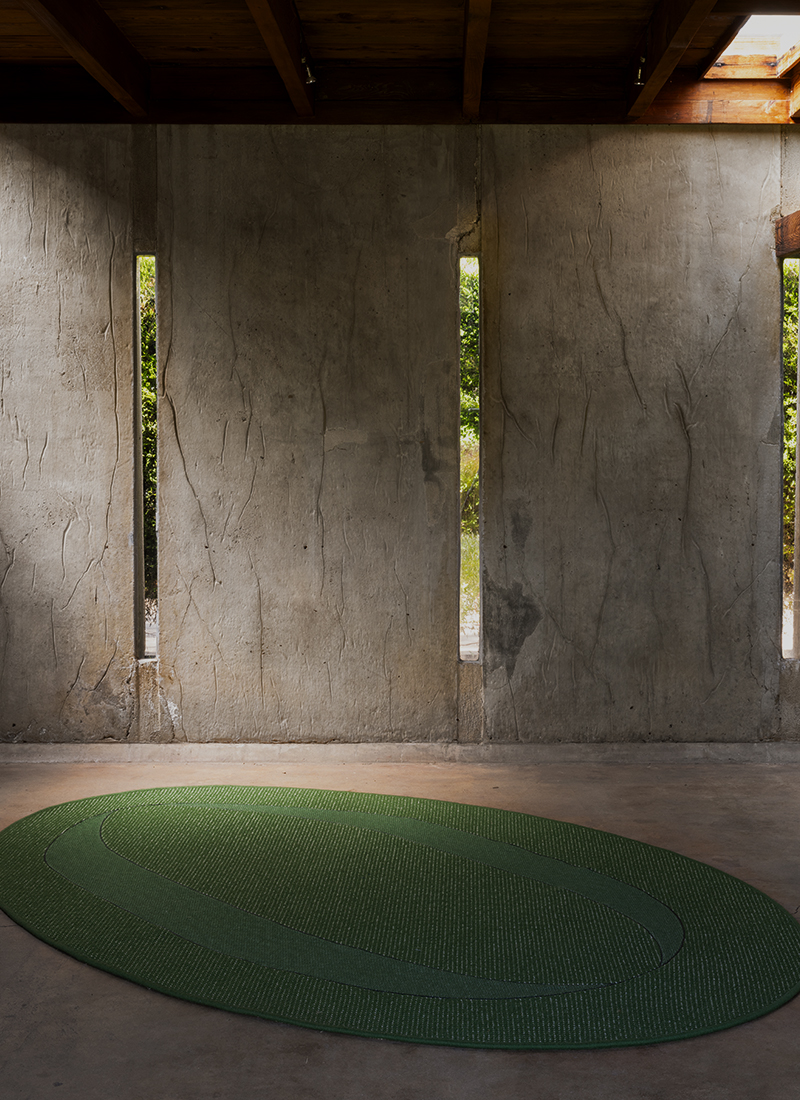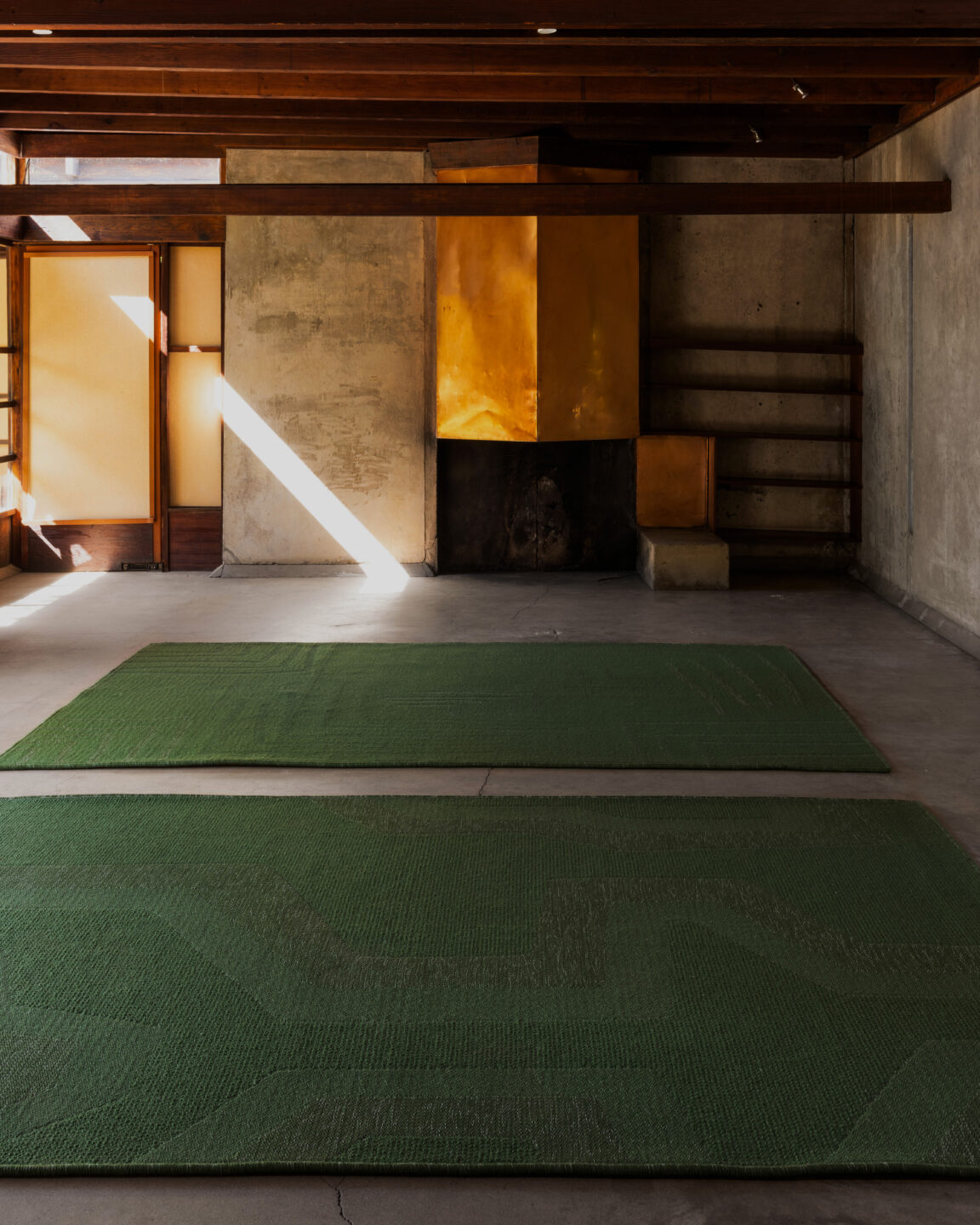Designed in 1922 by architect Rudolph M. Schindler, the house is often considered the birthplace of California modernism. Unlike traditional homes of its time, the Schindler House was conceived not as a dwelling in the conventional sense, but as an experiment in communal living and spatial openness. It was built from concrete slabs and redwood planks, using a tilt-up construction method that was radical for its time. The house rejects the idea of “rooms” and instead embraces fluid boundaries, both between interior and exterior and between self and environment. Nature flows into the architecture through open courtyards and sliding panels; privacy is replaced by presence.
Legends
We had the honor of installing works from our 2023 Atelier series, Outside Within, at the Schindler House in West Hollywood—an icon of experimental modernism. Set within this radical architectural landmark, our textile pieces entered into quiet dialogue with the structure’s elemental materials and open relationship to nature.
This architectural ethos made the Schindler House a profoundly fitting context for Outside Within, a series of textile works deeply rooted in the Land Art movement and Sylvie Johnson’s lifelong engagement with the natural world. Each rug in the series is not merely a decorative object but a meditation on materials, gesture, and environment.
Take Embrace (2023), for example—a tufted mohair rug with a motif resembling a nest of tangled branches. Installed in Schindler’s communal space, it echoed the raw tactility of redwood walls and the porousness of indoor/outdoor thresholds. Veer (2023), with its meandering yarn insertions, reflected the asymmetrical flow of the house’s spatial logic, while Arbor (2023), with its irregular, right-angled motifs, mimicked the spirit of makeshift shelter and architectural improvisation that defines the house itself.
Tephra (2023), a dobby-woven piece with spliced yarns and wabi sabi sensibilities, became a subtle conversation with the unfinished textures of concrete and earth surrounding the structure. Firth (2023), whose geometry suggests the intersection of natural and industrial forces, found quiet harmony among the Schindler House’s contrasting elements: lightness and weight, nature and form, permanence and impermanence.
Together, these pieces did more than occupy space—they responded to it. Just as Schindler designed the house as an extension of the California landscape, Outside Within extended textile practice into the realm of architecture, proposing fiber as both ground and gesture, surface and structure.
To install these works in the Schindler House was to recognize a shared language—between architecture and textile, between built form and natural order, between the personal and the planetary. It was a gesture of return: to nature, to experimentation, to the quiet radicalism of material honesty.
